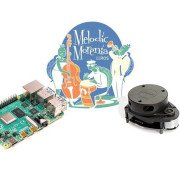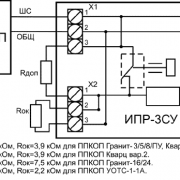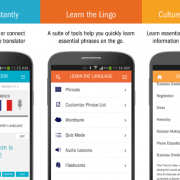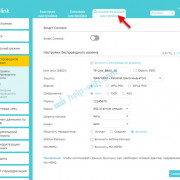Malware
Содержание:
- Может и ваш компьютер «болен» Malware
- An ounce of prevention vs. a pound of cure
- The future of antiviruses and security programs
- What is Malware?
- Инструментарий
- All about malware
- Инструкция по удалению
- Виды атак вредоносного ПО
- Norman Malware Cleaner
- Описание антивирусной утилиты Anti-Malware
- Возможности Malwarebytes Anti-Malware
- Mobile spyware
- How does malware affect my business?
- Advancements in Antivirus Software & Cybersecurity
- What is adware? Adware definition
- Как Malware получает котроль над системой
- Анализ риска
Может и ваш компьютер «болен» Malware
Malware представляет собой постоянную опасность для корпоративных сетей. На текущий момент Malware разносится с неумолимой скоростью и самыми разнообразными способами. Вполне возможно, что и ваш ПК поражен им. Что можно с этим поделать?
Если случилось так, что ваш компьютер получил это зловредное ПО, то не стоит устанавливать новую версию Windows. Лучше сначала попытаться избавиться от Malware самостоятельно, либо, если вы не уверены в своих силах, вам понадобится антивирусное программное обеспечение.
Существуют настолько хорошо защищенные Malware, что их практически нельзя удалить, если они запущены. Стоит отметить, что многие из anti-Malware сервисов могут удалить лишь половину «инфекций», поэтому нужно использовать сразу несколько продуктов, чтобы быть уверенными в максимально полной очистке системы.
An ounce of prevention vs. a pound of cure
From desktops and laptops to tablets and smartphones, all our devices are vulnerable to malware. Given a choice, who wouldn’t want to prevent an infection instead of dealing with the aftermath?
The best antivirus software alone is not up to the task, as evidenced by the regular stream of newspaper headlines reporting yet another successful cyberattack.
So, what should you do to stay safe? What kind of cybersecurity software — antivirus software or anti-malware software — should one choose to address a threat landscape that consists of legacy viruses and emerging malware? What is the best antivirus program for you?
The fact is, traditional antiviruses alone are inadequate against emerging zero-day threats, allow ransomware to successfully hijack computers, and don’t completely remove malware. What’s needed is an advanced cybersecurity program that is flexible and smart enough to anticipate today’s increasingly sophisticated threats.
Malwarebytes for Windows fulfils this need for advanced antivirus security (along with Malwarebytes for Mac, Malwarebytes for Android, and Malwarebytes business solutions). Malwarebytes offers one of the best antivirus programs to protect computers against malware, hacks, viruses, ransomware, and other ever-evolving threats to help support a safe online antivirus experience. Our AI-enhanced, heuristics-based technology blocks threats that a traditional computer antivirus isn’t smart enough to stop.
For an additional layer of antivirus protection, consider Malwarebytes Browser Guard. It’s the browser extension that stops annoying ads and trackers. Plus, it’s the world’s first browser extension that blocks tech support scams.
Industry watchers have cited Malwarebytes for Windows for its role in a layered antivirus protection approach, providing one of the best antivirus programs without degrading system performance. It removes all traces of malware, blocks the latest threats, and is a fast virus scanner.
Regardless of the cybersecurity software you choose your first line of defense is education. Stay up to date on the latest online threats and antivirus protection by making the Malwarebytes Labs blog a regular read.
The future of antiviruses and security programs
Artificial intelligence (AI) and machine learning (ML) are the latest stars in the top antivirus and anti-malware technology.
AI allows machines to perform tasks for which they are not specifically pre-programmed. AI does not blindly execute a limited set of commands. Rather, AI uses “intelligence” to analyze a situation, and take action for a given goal such as identifying signs of ransomware activity. ML is programming that’s capable of recognizing patterns in new data, then classifying the data in ways that teach the machine how to learn.
Put another way, AI focuses on building smart machines, while ML uses algorithms that allow the machines to learn from experience. Both these technologies are a perfect fit for cybersecurity, especially since the number and variety of threats coming in every day are too overwhelming for signature-based methods or other manual measures. Both AI and ML are still in developmental phases, but they hold immense promise.
In fact, at Malwarebytes, we already use a machine-learning component that detects malware that’s never been seen before in the wild, also known as zero-days or zero-hours. Other components of our software perform behavior-based, heuristic detections—meaning they may not recognize a particular code as malicious, but they have determined that a file or website is acting in a way that it shouldn’t. This tech is based on AI/ML and is available to our users both with top antivirus protection and an on-demand scanner.
In the case of business IT professionals with multiple endpoints to secure, the heuristic approach is especially important. We never know the next big malware threat, so heuristics play an important role in Malwarebytes Endpoint Protection, as does AI and ML. Together, they create multiple layers of antivirus protection that address all stages of the attack chain for both known and unknown threats.
What is Malware?
Malware, or “malicious software,” is an umbrella term that describes any malicious program or code that is harmful to systems. Hackers use malware for any number of reasons such as, extracting personal information or passwords, stealing money, or preventing owners from accessing their devices.
Malware includes computer viruses, ransomware, worms, trojan horses, rootkits, keyloggers, dialers, spyware, adware, malicious BHOs, rogue security software, and other malicious programs; the majority of active malware threats are usually worms or trojans rather than viruses.
Below you can find a short description for the most common types of malware:
-
Trojan Horse
A Trojan Horse is a type of malware that pretends to be something useful, helpful, or fun while actually causing harm or stealing data. Trojans are often silently downloading other malware (e.g. spyware, adware, ransomware) on an infected device as well. -
Worm
A computer worm is a type of Trojan that is capable of propagating or replicating itself from one system to another. It can do this in a number of ways. Unlike viruses, worms don’t need a host file to latch onto. After arriving and executing on a target system, it can do a number of malicious tasks, such as dropping other malware, copying itself onto devices physically attached to the affected system, deleting files, and consuming bandwidth. -
Spyware
Spyware is a type of malware that’s hard to detect. It collects information about your surfing habits, browsing history, or personal information (such as credit card numbers), and often uses the Internet to pass this information along to third parties without you knowing. Keyloggers are a type of spyware that monitors your keystrokes. -
Ransomware
Ransom malware or ransomware is a threat that prevents users from accessing their system or personal files and demands a ransom payment in order to regain access. -
Rootkits
The term “rootkit” comes from “rootkit,” a package giving the highest privileges in the system. It is used to describe software that allows for the stealthy presence of unauthorized functionality in the system. Rootkits modify and intercept typical modules of the environment (OS, or even deeper, rootkits). -
Adware
Adware, short for advertising-supported software, is arguably the forerunner of the modern-day PUP (Potentially Unwanted Program). Adware is typically a standalone program that displays adverts to the end-user in a variety of forms: inside the program itself, or via pop-ups, slide-in adverts, browser pop-ups, inserted adverts, or altered website content. The revenue generated by the adverts is how the program the adware is attached to is paid for, meaning the end-user receives their desired tool or service for “free.”
Инструментарий
HEX-редакторы
Один из основных инструментов статического базового анализа — это HEX-редактор. Их много, но в первую очередь необходимо отметить Hiew. Это безусловный лидер и бестселлер. Помимо непосредственно функций HEX-редактора, в нем реализовано еще много дополнительных возможностей, связанных с анализом файла: это и дизассемблер, и просмотрщик секций импорта и экспорта, и анализатор заголовка исполняемых файлов. Главный недостаток — все это не бесплатно (хотя и весьма недорого — от 555 рублей).

HEX-редактор Hiew
Если не хочется тратить деньги, то можно обратить внимание, например, на Hex Editor Neo (есть бесплатный вариант) или на HxD Hex Editor
Детекторы упаковщиков
Если есть подозрение, что файл упакован, то с помощью детектора упаковщиков можно попытаться определить, какой упаковщик при этом использовался, и попробовать распаковать исследуемый файл. Долгое время безусловным лидером здесь была программа PEiD, и в принципе можно пользоваться и ей, однако поддержка давно прекращена и новых сигнатур для определения типов упаковщика уже никто не выпускает. Альтернатива — Exeinfo PE.

Exeinfo PE
Эта программа, помимо детекта упаковщиков, имеет еще много других функций для анализа исполняемых файлов Windows, и во многих случаях можно обойтись ей одной.
Специализированные утилиты для исследования исполняемых файлов Windows
Программа CFF Explorer из пакета Explorer Suite — это настоящий швейцарский нож для исследователя PE-файлов. Позволяет получить огромное количество разнообразной информации обо всех компонентах структуры PE-файла и, помимо прочего, может служить HEX-редактором.

CFF Explorer
Так что настоятельно рекомендую CFF Explorer, тем более что программа бесплатная.
Python-модуль pefile
Python-модуль pefile позволит обойтись при анализе PE-файлов исключительно интерпретатором Python. С ним практически все операции по базовому статическому анализу можно реализовать путем написания небольших скриптов. Прелесть всего этого в том, что заниматься исследованием PE-файлов можно в Linux.
Модуль присутствует в PyPi, и установить его можно через pip:
pip install pefile
Yara
Ну и в завершение всего списка весьма популярный и востребованный инструмент, ставший своеобразным стандартом в среде антивирусной индустрии, — проект Yara. Разработчики позиционируют его как инструмент, который помогает исследователям малвари идентифицировать и классифицировать вредоносные сэмплы. Исследователь может создать описания для разного типа малвари в виде так называемых правил, используя текстовые или бинарные паттерны.
All about malware
You know how every year the medical community campaigns for everyone to get a flu shot? That’s because flu outbreaks typically have a season—a time of year when they start spreading and infecting people.
In contrast, there are no predictable seasonal infections for PCs, smartphones, tablets, and enterprise networks. For them, it’s always flu season. But instead of suffering chills and body aches, users can fall ill from a kind of machine malady—malware.
Each type of malware infection has its own methods of attack—from stealthy and sneaky to subtle like a sledgehammer. But if knowledge is power, as a preventative inoculation against infection, we offer here a short cybersecurity course on malware, what it is, its symptoms, how you get it, how to deal with it, and how to avoid it in the future.
Инструкция по удалению
Способ 1: Norman Malware Cleaner
Есть несколько программных вариантов, с помощью которых можно удалить вирус win32 malware gen раз и навсегда. Самым удобным является его устранение с помощью программы Norman Malware Cleaner.
У выбранной нами утилиты есть всего один существенный недостаток, а именно постоянная необходимость скачивать новую версию утилиты из-за отсутствия функции обновления без перезакачки самой программы. Во всем остальном же исключительно преимущества – абсолютно бесплатно, простой интерфейс, высокая скорость работы. Единственное, чего не хватает, так это русского языка.
Для того чтобы быстро и без каких-либо проблем вылечить компьютер с помощью данной программы, необходимо придерживаться следующей инструкции:
- Скачиваем утилиту с официального сайта или любого другого проверенного источника.
- Запускаем скачанный файл, у него должно быть разрешение «.exe». Еще один плюс – не требуется длительная установка, а файл и вовсе можно загрузить на флешку и не захламлять компьютер мусором.
- Читаем условия использования, соглашение о лицензии и жмем «Accept».
- Появится основное окно утилиты. Рекомендуется сразу зайти в «Options» и напротив пункта «Enable rootkit cleaning» поставить галочку, после чего подтвердить свои действия, нажав «Apply».
- Далее возвращаемся во вкладку «Scan» и выбираем полноценное сканирование «Full». Нажимаем «Start», после чего процесс запускается.
Вот и все, остается лишь подождать окончания сканирования, после чего утилита в автоматическом режиме найдет и удалит все вредоносное ПО с вашего устройства.
Важно! Учитывайте, что утилита находит и удаляет любые взломщики программ, поэтому если таковые имеются, то следует заранее позаботиться об их сохранности
Способ 2: Spybot Search & Destroy
Еще одна отличная бесплатная программа, которая способна быстро обнаружить и удалить практически любой вирус, включая Win32.Malware-gen. Существует очень давно, регулярно обновляется и хорошо зарекомендовала себя среди множества пользователей. Также в функционале имеется карантин, который позволит вам восстановить случайно удаленные файлы.
Итак, как ей пользоваться:
- Скачиваем с оф.сайта и устанавливаем. В процессе инсталляции вас спросят, для чего вы устанавливаете Spybot – выбираем первый пункт для установки бесплатной версии.
- Далее необходимо выбрать способ использования утилиты. Выбираем первый пункт.
- После того как ПО установится, запускаем и переходим в раздел «Обновление».
- Нажимаем по кнопке «Обновление» для загрузки актуальных баз.
- После того как обновление завершится, в основном окне переходим в раздел «Сканирование системы» и запускаем процесс. Если требуется просканировать отдельную файл или папку, следует выбрать пункт «Сканирование файлов».
- Для удаления найденных угроз нажимаем кнопку «Исправить отмеченное».
Таким образом, мы полностью вылечим компьютер или ноутбук от вредоносного ПО.
Виды атак вредоносного ПО
Вирусы, черви и трояны определяются по способу их распространения. Другие вредоносные программы названы согласно видам их атак.
Шпионское ПО следит за компьютером пользователя и крадет его пароли или другую личную информацию. Более того, оно также может буквально шпионить за владельцем с помощью веб-камеры или подслушивая разговоры с помощью микрофона.
Одна из разновидностей шпионского ПО — Stalkerware, которая устанавливается на телефон жертвы и передает данные о местоположении и личную информацию тому, кто ее преследует. Многие современные антивирусные программы включают компоненты, специально разработанные для защиты от программ-шпионов.
Рекламное ПО показывает нежелательные рекламные объявления, иногда они основываются на данных о пользователе, украденных шпионским ПО. Реклама бывает настолько ресурсоемкой, что пользоваться устройством становится практически невозможно.

Фото в тексте: Nebojsa Tatomirov /
Руткит — это набор программных средств, которые подключаются к операционной системе, чтобы скрыть компоненты вредоносной программы. Когда утилита безопасности запрашивает у Windows список файлов, руткит перехватывает его, удаляет свое собственное имя и передает скомпрометированный список запрашивающей программе. Руткиты могут выполнять такие же действия и с запросами данных из реестра.
Компьютер, на который устанавливается бот, как правило, не страдает от него напрямую. Но он начинает причинять вред другим. Бот тихо прячется, пока владелец (иногда его называют бот-пастухом) не передаст команду. Затем, вместе с сотнями или тысячами других таких же ботов, он выполняет любые инструкции. Они часто используются для рассылки спама.
Дроппер — маленькая и незаметная программа, которые занимается исключительно загрузкой вредоносного ПО на компьютер жертвы и может получать инструкции от разработчика. Создатель дроппера зарабатывает, распространяя чужие программы.
Как следует из названия, программа-вымогатель шифрует компьютер или данные пользователя с целью получения выкупа. Теоретически антивирус должен отслеживать программы-вымогатели так же, как и любые другие вредоносные программы. Однако учитывая последствия подобных атак, есть смысл использовать отдельную утилиту защиты от программ-вымогателей.
Norman Malware Cleaner
Большую известность в борьбе с «малварем» получила программа Norman Malware Cleaner. Популярен также и аналогичный софт — Malwarebytes’ Anti-Malware. Однако последний грешит тем, что может заодно лишить вас безвредных программ и данных, хранящихся на компьютере.

Norman Malware Cleaner тоже выделяется недостатком: для каждого обновления приложения вам необходимо будет заново закачивать и устанавливать его. Также не представлена поддержка русского языка. Но на фоне всего этого выделяются и достоинства программы: удобный интуитивный интерфейс, быстрая и качественная работа, абсолютно бесплатное использование.
Описание антивирусной утилиты Anti-Malware
Anti-Malware имеет приятный светлый интерфейс с темным меню. Собственно само меню состоит из четырех пунктов. Панель мониторинга, Сканирование, Параметры и История. В первой вкладке отображается системная информация программы. Сюда входит лицензия, актуальность вирусных баз, процесс сканирования и параметры защиты. Сканирование компьютера можно запустить не только со вкладки «Сканирование», но и с любой другой. С единственным отличием, что во вкладке «Сканирование» вам будет доступна более полная информация о анализе и проверке системы. Это и количество проверенных объектов, и этап сканирования, и оставшееся время.
С вкладки «Параметры» производится полная настройка утилиты Anti-Malware. Здесь вы сможете добавить файлы в исключения, чтобы антивирус не проверял их вовсе, настроить параметры сканирования и параметры обновления, а также автоматический запуск сканирования системы. Последняя функция очень важна, ведь дело в том, что сканирование производится довольно длительное время, а с помощью планировщика вы сможете запустить сканирование и лечение вредоносных программ в заданное время, например, ночью. Таким образом, вы экономите свое время и поддерживаете свой компьютер в рабочем состоянии.
Возможности Malwarebytes Anti-Malware
В первую очередь программа Malwarebytes Anti-Malware предназначена для очистки компьютера от вредоносного ПО. Это могут быть вирусы, шпионские программы, трояны или черви. Антималваре вначале производит поиск вредоносного ПО, а затем происходит его анализ. Во время анализа программа решает, как поступить с зараженными файлами и программами. Если возможно, то производится их лечение, в противном случае – они помещаются на карантин. А это означает, что подобного рода файлы скрываются и их работоспособность блокируется антивирусной программой.
Также, важно отметить и тот факт, что с помощью Malwarebytes Anti-Malware можно избавиться от довнлоадеров и бэкдоров, которые показывают рекламу в браузерах вызванную установкой Adware, троянов и различных дополнений. Как часто заходя на тот или иной сайт, вам надоедает одна и та же всплывающая реклама? Или ваш любимый браузер открывается с рекламой
Чтобы избежать этого, вы можете скачать программу Malwarebytes Anti-Malware. Она отлично ищет руткиты избавившись от которых вы увидите нормальное отображение сайта без левой рекламы. Это важно, так как бывают такие сайты, на которых есть реально полезный контент, но на фоне многочисленных рекламных баннеров он просто теряется и стает трудным к восприятию. Anti-Malware удаляет ее и возвращает сайтам их первоначальный вид. Данная утилита не блокирует все виды баннерной рекламы. Под эту категорию подпадают и flash-баннеры. Для блокировки всей рекламы используйте дополнения к браузерам такие как Adblock plus и uBlock. Но вы должны понимать и тот факт, что заблокировать всю рекламу невозможно. Ведь разработчики баннеров всячески пытаются обойти различные блокировки и придумывают все новые способы это сделать. Данную прогрмму стоит постоянно обновлять, чтобы держать в актуальном состоянии ее антивирусную базу
Как часто заходя на тот или иной сайт, вам надоедает одна и та же всплывающая реклама? Или ваш любимый браузер открывается с рекламой. Чтобы избежать этого, вы можете скачать программу Malwarebytes Anti-Malware. Она отлично ищет руткиты избавившись от которых вы увидите нормальное отображение сайта без левой рекламы
Это важно, так как бывают такие сайты, на которых есть реально полезный контент, но на фоне многочисленных рекламных баннеров он просто теряется и стает трудным к восприятию. Anti-Malware удаляет ее и возвращает сайтам их первоначальный вид
Данная утилита не блокирует все виды баннерной рекламы. Под эту категорию подпадают и flash-баннеры. Для блокировки всей рекламы используйте дополнения к браузерам такие как Adblock plus и uBlock. Но вы должны понимать и тот факт, что заблокировать всю рекламу невозможно. Ведь разработчики баннеров всячески пытаются обойти различные блокировки и придумывают все новые способы это сделать. Данную прогрмму стоит постоянно обновлять, чтобы держать в актуальном состоянии ее антивирусную базу.
Mobile spyware
Also, it’s not just consumers that mobile spyware criminals target. If you use your smartphone or tablet in the workplace, hackers can turn their attack to your employer organization through vulnerabilities in mobile devices. Moreover, your corporation’s incident response team may not detect breaches that originate through a mobile device.
Spyware breaches on smartphones commonly occur in three ways:
- Unsecured free wi-fi, which is common in public places such as airports and cafes. If you log onto an unsecured network, the bad guys can see everything you do while connected. Pay attention to warning messages your device may give you, especially if it indicates that the server identity cannot be verified. Protect yourself by avoiding such unsecured connections.
- Operating system (OS) flaws, which open up exploits that could let attackers infect a mobile device. Smartphone manufacturers frequently release OS updates to protect users, which is why you should install updates as soon as they are available (and before hackers try to infect out-of-date devices).
- Malicious apps, which hide in seemingly legitimate applications, especially when they are downloaded from websites or messages instead of an app store. Here it’s important to look at the warning messages when installing applications, especially if they seek permission to access your email or other personal information. Bottom line: It’s best to stick to trusted sources for mobile apps and avoid any third-party apps.
How does malware affect my business?
As noted in the Malwarebytes Labs Ransomware Retrospective, ransomware attacks on businesses went up 365 percent from Q2 2018 to Q2 2019.
So why are cybercriminals bullish on business attacks? The answer is simple: businesses present a broader attack surface and more bang for the buck. In one noteworthy example, the Emotet banking Trojan hobbled critical systems in the City of Allentown, PA, requiring help from Microsoft’s incident response team to clean up and racking up remediation costs to the tune of $1 million.
In another example, the SamSam ransomware brought the City of Atlanta to its knees by taking down several essential city services—including revenue collection. Ultimately, the SamSam attack cost Atlanta $2.6 million to remediate.
And that’s just the clean-up costs. The costs involved with a data breach and the resulting cases of identity theft are through the roof. The Ponemon Institute’s 2019 Cost of a Data Breach Report pegs the current average cost at $3.92 million.
On the high end, the settlement costs from the 2017 Equifax data breach, which started with a simple and easy to protect against SQL injection, are reportedly around $650 million.
The majority of malware attacks on businesses as of late have been the result of TrickBot. First detected in 2016, the Trickbot banking Trojan has already gone through several iterations as its authors strengthen its evasion, propagation, and encryption abilities.
Considering the tremendous cost associated with a malware attack and the current rise of ransomware and banking Trojans in particular, here’s some tips on how to protect your business from malware.
- Implement network segmentation. Spreading your data onto smaller subnetworks reduces your attack surface—smaller targets are harder to hit. This can help contain a breach to only a few endpoints instead of your entire infrastructure.
- Enforce the principle of least privilege (PoLP). In short, give users the access level they need to do their jobs and nothing more. Again, this helps to contain damages from breaches or ransomware attacks.
- Backup all your data. This goes for all the endpoints on your network and network shares too. As long as your data is archived, you can always wipe an infected system and restore from a backup.
- Educate end users on how to spot malspam. Users should be wary of unsolicited emails and attachments from unknown senders. When handling attachments, your users should avoid executing executable files and avoid enabling macros on Office files. When in doubt, reach out. Train end users to inquire further if suspicious emails appear to be from a trusted source. One quick phone call or email goes a long way towards avoiding malware.
- Educate staff on creating strong passwords. While you’re at it, implement some form of multi-factor authentication—two-factor at a bare minimum.
- Patch and update your software. Microsoft releases security updates the second Tuesday of every month and many other software makers have followed suit. Stay in the loop on important security updates by subscribing to the Microsoft Security Response Center blog. Expedite the patch process by launching updates at each endpoint from one central agent, as opposed to leaving it up to each end user to complete on their own time.
- Get rid of end of abandonware. Sometimes it’s hard to get rid of old software that’s past its expiration date—especially at a large business where the purchasing cycle moves with the urgency of a sloth, but discontinued software is truly the worst-case scenario for any network or system administrator. Cybercriminals actively seek out systems running outdated and obsolete software so replace it as soon as possible.
- Get proactive about endpoint protection. Malwarebytes, for example, has multiple options for your business with Endpoint Protection, Endpoint Security, and Endpoint Protection and Response. And for small businesses looking to protect up to 20 devices, check out Malwarebytes for Teams.
Advancements in Antivirus Software & Cybersecurity
Two relatively new forms of malware have helped drive the advancement of signature-less detection methods: exploits and ransomware. Though these threats are similar to others in many ways, they can be much harder to detect. Furthermore, once your computer is infected, these threats can be almost impossible to remove.
Exploits get their name because they literally exploit vulnerabilities in a system, software, or web browser in order to install malicious code in a variety of ways. Anti-exploit measures were developed as a shield against this method of attack, protecting against Flash exploits and browser weaknesses, including new exploits that have not been identified or vulnerabilities for which patches have not yet been created.
Ransomware emerged on the malware scene to spectacular effect in 2013. Ransomware made a name for itself by hijacking and encrypting computer data, and then extorting payments as it held the data hostage. and even threatened to erase it if a deadline passed without payment. Originally, both these threats resulted in the development of dedicated anti-exploit and anti-ransomware products.
In December 2016, Malwarebytes folded anti-exploit and malicious website antivirus protection into the premium version of Malwarebytes for Windows. We have since added anti-ransomware for even more advanced anti-malware protection.
What is adware? Adware definition
Adware is unwanted software designed to throw advertisements up on your screen, most often within a web browser. Some security professionals view it as the forerunner of the modern-day PUP (potentially unwanted program). Typically, it uses an underhanded method to either disguise itself as legitimate, or piggyback on another program to trick you into installing it on your PC, tablet, or mobile device.

“Adware is unwanted software designed to throw advertisements up on your screen.”
Adware generates revenue for its developer by automatically displaying online advertisements in the user interface of the software or on a screen that pops up in the user’s face during the installation process. And that’s when you start seeing dubious miracle weight loss programs, offers for get-rich-quick secrets, and bogus virus warnings that invite your click. Also, you might experience new tabs opening, a change in your home page, findings from a search engine you never heard of, or even a redirect to a NSFW website.
Mind you, it does happen that legitimate software applications do use online advertising, with ads that are typically bundled within the program and that display in ways the program developer specified. Adware is an altogether different kettle of rotten fish. You might download it without understanding its intent. Or it might land on your PC by means of legitimate software within which it’s secretly buried. Whatever the path, it all boils down to some program on your computer showing you advertisements that do not come from the websites you are visiting.
Once adware hijacks your device, it might carry out all sorts of unwanted tasks. The software’s functions may be designed to analyze the location and which Internet sites you visit, and then present advertising pertinent to the types of goods or services featured there. While adware is more of a pesky nuisance than a harmful malware threat to your cybersecurity, if the adware authors sell your browsing behavior and information to third parties, they can even use it to target you with more advertisements customized to your viewing habits. And it doesn’t matter whether you are using Chrome, Firefox, or other browsers: It affects all of them.
Here are a few typical telltale signs that you have adware on your system:
- Advertisements appear in places they shouldn’t be.
- Your web browser’s homepage has mysteriously changed without your permission.
- Web pages that you typically visit are not displaying properly.
- Website links redirect to sites different from what you expected.
- Your web browser slows to a crawl.
- New toolbars, extensions, or plugins suddenly populate your browser.
- Your Mac starts automatically installing unwanted software applications.
- Your browser crashes.
Stop annoying adware from spamming your device
Ads slowing your device down? Scan and remove adware that’s hiding on your device. Try Malwarebytes Premium free for 14 days.
Как Malware получает котроль над системой
Для работы Malware требуется, чтобы пользователь его запустил, и это – только первый шаг. Достаточно часто Malware использует другие методы, чтобы предоставить себе наиболее вероятную гарантию хотя бы на единоразовый запуск в каждой из сессий работы системы
Для Malware исключительно важно производить запуск себя и резидентно присутствовать в памяти. И удобнее всего Malware прописываться при загрузке компьютера, а также при инициализации и переконфигурации системы
Основные места обитания Malware – файлы command.com, autoexec.bat и config.sys, файлы конфигурации в системах DOS и Windows при загрузке по стандартной схеме. Кроме того, часто Malware прячется в файлах главных шаблонов офисных приложений Word и Excel – Normal.dot и XLStart.
Анализ риска
Пользователи персональных компьютеров порой не считают вредоносные программы серьезной угрозой, хотя часто становятся жертвами кражи учетных данных либо блокировки компьютера с требованием выкупа. Бизнес, наоборот, говорит об инфекциях как о существенной угрозе своей деятельности.
Распространение получают вредоносные программы, попадающие в устройства интернета вещей. Так, компания из Британии создала вирус-вымогатель для термостата, подключенного к Wi-Fi. Получив контроль над оборудованием, он способен опустить температуру до критической отметки и требовать денег. Подробнее о новой вредоносной программе можно прочитать в статье «Вирусы-вымогатели добрались до термостатов.
Нет абсолютной защиты от инфекций, но снизить риск реализации угрозы можно. Для этого необходимо устанавливать новые версии операционных систем, следить за обновлением всех программ, использовать антивирусные решения от надежных производителей, не допускать к ПК посторонних лиц, не открывать подозрительные ссылки, письма и файлы, выполнять ряд других предохранительных мер.



